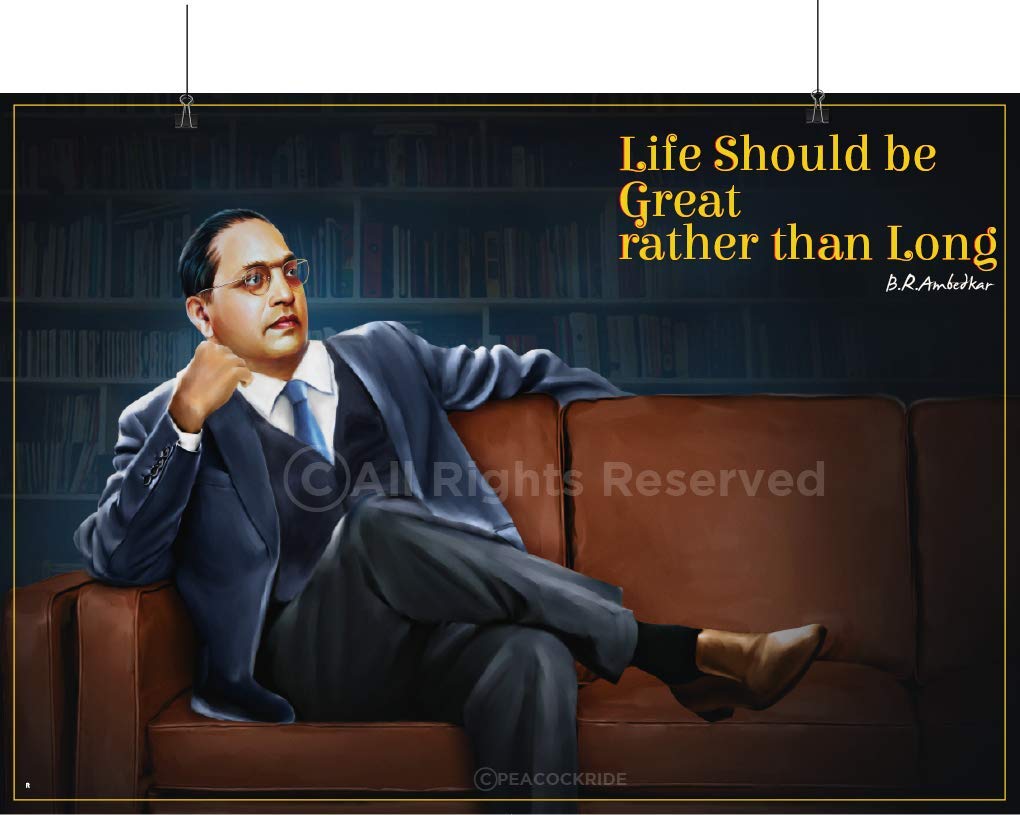

Ambedkar also spent a few months at the University of Bonn, Germany, to study economics. There he was received the D.Sc by the London University. In order to continue his further studies, he went to England in 1920 at his own expense.

With the help of the former Bombay Governor Lord Sydenham, Ambedkar became a professor of political economy at the Sydenham College of Commerce and Economics in Bombay. In 1916, he enrolled in the London School of Economics and started working on his doctoral thesis titled “The problem of the rupee: Its origin and its solution”. He completed his Master’s degree in June 1915 after successfully completing his thesis titled ‘Ancient Indian Commerce’. He enrolled in the Columbia University in New York City to study Economics.

Ambedkar decided to use the money for higher studies in the USA. Besides clearing all the exams successfully Ambedkar also obtained a scholarship of twenty five rupees a month from the Gaekwad ruler of Baroda, Sahyaji Rao III. In 1908, Ambedkar got the opportunity to study at the Elphinstone College and obtained his graduate degree in Economics and Political Science in the year 1912 from Bombay University. He cleared his matriculation in 1908 from Elphinstone High School. After coming back from the US, Ambedkar was appointed as the Defence secretary to the King of Baroda but there also he had to face the humiliation for being an ‘Untouchable’. Discrimination followed wherever he went. After shifting to Satara, he was enrolled at a local school but the change of school did not change the fate of young Bhimrao. The untouchable students were often asked by the teacher to sit outside the class. Fearing social outcry, the teachers would segregate the students of lower class from that of Brahmins and other upper classes. The discrimination and humiliation haunted Ambedkar at the Army school. Hailing from the Hindu Mahar caste, his family was viewed as “untouchable” by the upper classes. Throughout his childhood, Ambedkar faced the stigmas of caste discrimination. His father Ramji Sakpal died in Bombay, in 1912. In 1906, 15 year old Bhimrao married Ramabai, a 9 year old girl. Four years later, his father remarried and the family shifted to Bombay. Shortly after this, Bhimrao’s mother passed away. Ambedkar’s father was a Subedar in the Indian Army and after his retirement in 1894, the family moved to Satara, also in Central Provinces. He was posthumously awarded the Bharat Ratna, India’s highest civilian honor, in 1990.īhimrao Ambedkar was born to Bhimabai and Ramji on 14 April 1891 in Mhow Army Cantonment, Central Provinces (Madhya Pradesh). Ambedkar was appointed as India’s first Law Minister in the Cabinet of Jawaharlal Nehru. Throughout his life, he fought for the rights of the dalits and other socially backward classes.

A well-known politician and an eminent jurist, his efforts to eradicate social evils like untouchablity and caste restrictions were remarkable. He is also known as the Father of Indian Constitution. Bhimrao Ramji Ambedkar, popularly known as Babasaheb Ambedkar, was a jurist, social reformer and politician.


 0 kommentar(er)
0 kommentar(er)
